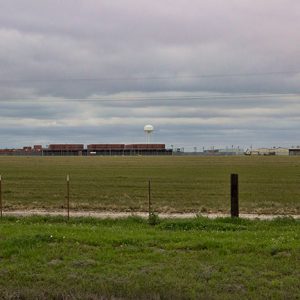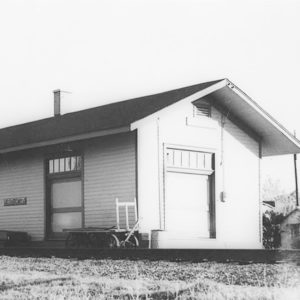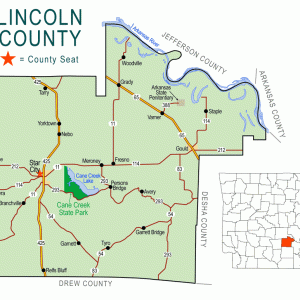calsfoundation@cals.org
Grady (Lincoln County)
| Latitude and Longitude: | 34º04’48″N 091º42’02″W |
| Elevation: | 184 feet |
| Area: | 1.85 square miles (2020 Census) |
| Population: | 305 (2020 Census) |
| Incorporation Date: | April 20, 1907 |
Historical Population as per the U.S. Census:
|
1810 |
1820 |
1830 |
1840 |
1850 |
1860 |
1870 |
1880 |
1890 |
1900 |
|
– |
– |
– |
– |
– |
– |
– |
– |
– |
– |
|
1910 |
1920 |
1930 |
1940 |
1950 |
1960 |
1970 |
1980 |
1990 |
2000 |
|
180 |
398 |
496 |
472 |
517 |
622 |
688 |
488 |
586 |
523 |
|
2010 |
2020 |
|
|
|
|
|
|
|
|
|
449 |
305 |
|
|
|
|
|
|
|
|
Grady is a second-class city in northern Lincoln County. Located near the Cummins Unit of the Arkansas Department of Correction, the city is bisected by Business Highway 65 but bypassed by the main highway, which runs from northwest Arkansas to southeast Arkansas, including such cities as Harrison (Boone County), Conway (Faulkner County), Little Rock (Pulaski County), Pine Bluff (Jefferson County), and Eudora (Chicot County).
The first settlers of Grady included John S. Hall, who came with his family from South Carolina in 1846, and J. P. Williams, who immigrated to Arkansas from Ireland. The settlement was first called Hall’s Landing, but when Williams built the first store in the community and helped to establish a post office in 1881, the post office was called Williamsburg. The name of the post office was changed to Grady in 1898 to honor the local telegraph operator.
In 1886, the city had three stores, two cotton gins, two physicians, and two schools. It also had a railroad depot for the Little Rock, Mississippi River, and Texas Railway, which had completed laying track through that part of the state in 1884. The line went through several changes of ownership, eventually becoming part of the Union Pacific Railroad. The city was incorporated in 1907.
In the twentieth century, the school system for white students consisted of two campuses—an elementary school and a high school. A gymnasium was built in 1929, and a school library was established from donated books in 1935. When the Yorktown (Lincoln County) school system was consolidated with Grady’s school system in 1945, a white frame structure was moved from Yorktown to Grady to serve as a cafeteria and meeting space. A new cafeteria was built in 1965, and the older structure became a practice room for the school band. A two-story building on the other side of the tracks was used as a school for African Americans. After the African-American school building was damaged by flooding in 1915, a new building was erected close to Highway 65. The schools were desegregated around 1968, and the former black school became the city’s elementary school.
The Cummins State Prison Farm, now the Cummins Unit of the Arkansas Department of Correction, opened near Grady in 1902. The unit has provided jobs to workers of the area, especially after the trusty system (which employed prisoners as supervisors within the unit) was phased out due to prison reform in the 1970s.
During World War II, a small airfield was constructed southeast of Grady as an auxiliary airfield to support training at Grider Field in Pine Bluff. Called Matthews Field, the facility included three fields for practicing take-offs and landings, a control tower, and two metal hangars. The field operated from 1942 to 1944. Grady also housed a prisoner-of-war (POW) camp in 1944 and 1945. The POWs assisted in cotton farming around Grady and also held concerts on Sundays that were attended by citizens of the city.
A volunteer fire department was organized in 1964. Ten years later, a new fire station was dedicated. That same year, the city’s first ambulance service was established. In 2004, the Grady school system was consolidated into the Star City (Lincoln County) school system. Grady is now home to the Arkansas Department of Career Education’s Riverside Vocational Technical School.
The Hardin family has owned an operated a major agricultural establishment near Grady for five generations. One member of the family, Joseph Carrol (Joe) Hardin, was active in state politics, serving in the Arkansas House of Representatives in the 1930s and running second to Orval Faubus in the 1960 Democratic primary for governor. The third lock and dam in the McClellan-Kerr Arkansas River Navigation System is named for Joe Hardin. Another noteworthy farming manages Carpenter’s Produce, which raises fruits and vegetables. Founded by Abraham Carpenter Sr. in 1969, Carpenter’s Produce is an important independent, black-owned business in the state.
For additional information:
History of Lincoln County, Arkansas, 1871–1983. Dallas, TX: Taylor Publishing Company, 1983.
Owen, Rhonda. “Deep Roots.” Arkansas Democrat-Gazette, August 19, 2012, pp. 1E, 6E.
Steven Teske
CALS Encyclopedia of Arkansas
 Cummins Unit
Cummins Unit  Grady Depot
Grady Depot  Hardin Farm
Hardin Farm  Lincoln County Map
Lincoln County Map 




Comments
No comments on this entry yet.